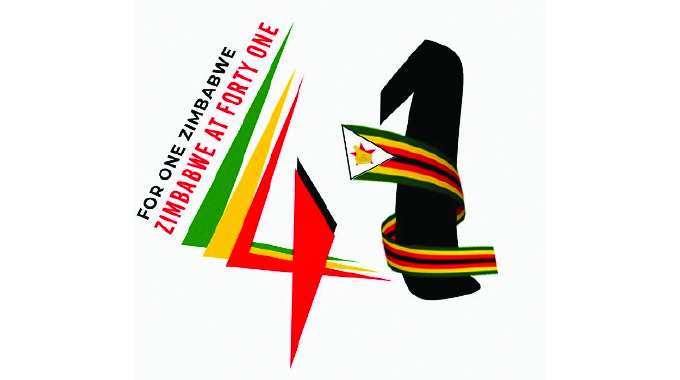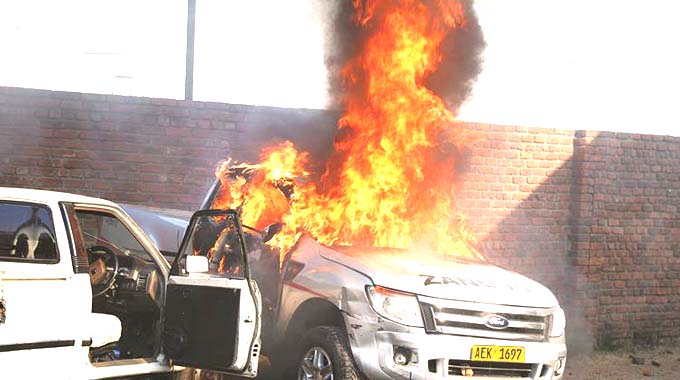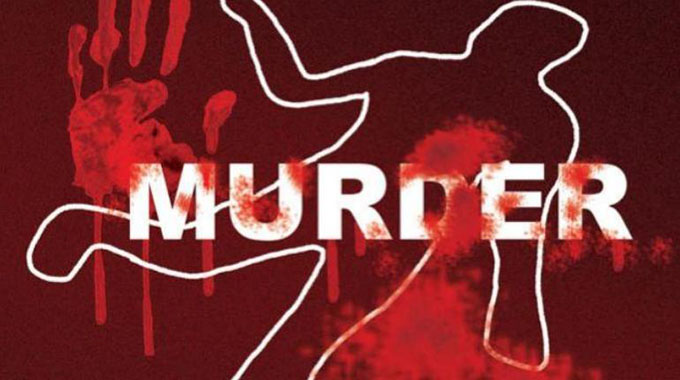Recovering the liberation memory

Hon Monica Mutsvangwa
Minister of Information, Publicity & Broadcasting Services
The Chimurenga II National Liberation War was an epochal people’s war waged by the great majority of Zimbabweans between 1965-1979.
It was an armed struggle for the restoration of nationhood from British foreign invaders and plunderers in the 1890s as European imperial powers partitioned the African continent culminating with the 1884 Berlin Conference.
The Chimurenga II overthrew the racist, settler minority rule of colonial Rhodesia. It ushered independence and African majority rule in 1980.
The Chimurenga II National Liberation war is above all a treasured national heritage to be passed on to present and future generations in perpetuity. It is the stuff of legends and folklore as it defines the essence of being Zimbabwean for all times.
It’s 41 years since the guns died down as peace, justice, freedom and unity won the day.
Whilst there have been some remarkable efforts to keep the memory of the epochal event alive, there has not been a concerted, sustained, disciplined and wide scholarship to truly capture the length, width and depth of this stupendous national endeavour of exceptional and painful sacrifice.
It is a matter of pride and record that Zimbabwe stands out as a sub-Saharan nation to wage a modern war against the Rhodesia cat’s paw of the British army, the military establishment of the modern age. Zimbabweans waged and won the Chimurenga II war relying completely on home-grown manpower.
The asymmetrical warfare against a military power aided by the US-led North Atlantic Treaty Organisation (NATO) powers against a fledgling African nation exacted horrendously human cost. This was underpinned by an exceptional quest for unified response, remarkable battlefield valour, astounding organisation flair and boundless creative genius to offset patently insurmountable odds.
The end product was a home-grown state apparatus owing allegiance solely to the people of Zimbabwe and their newly minted nation as of 1980. At the core is a proud national army that is a rich blend of the varied training from diverse military jurisdictions of friendly and sympathetic nations. This was garnered over an extended period as the fledgling army gestated from the humble recruiting in the 1960s.
Starting with a sprinkling of intrepid and visionary youths who include President Mnangagwa, the ZANLA-ZIPRA guerrilla units tortuously and heroically gathered moss. A decade later the ranks had swelled into an avalanche of youth eager to brave every sacrifice as they sought military training, get the AK47, deploy and fight the enemy.
Only on a few occasions has modern mankind witnessed such mass readiness by African youths to answer the call to modern arms against a world class military adversary.
For that Zimbabwe has to pay particular homage to President Samora Moises Machel and his victory- wielding FRELIMO party in 1974. They showed the way in their shared military humiliation of the military might of imperial and fascist Portugal.
Sources of Chimurenga-Impi Yomvukelo II
The present challenge is to go back 41 years ago and beyond so we capture as honest and truthful as can be the tumultuous events of the 15 long years of Chimurenga II. To achieve our goal, we need to establish the sources of the story of this epic endeavour.
Wartime Records
Alas the euphoria of freedom coupled by intentional and wilful neglect has ensured that wartime archival records were left to degrade and rot.
I have a personal sore point on this matter. I was forced to forego partaking in the joys of independence and freedom six months into a new Zimbabwe in 1980. I was custodian of sensitive war records at the apex of power at ZANU-ZANLA headquarters in Maputo.
I was given instructions to keep guard of these important historical records safe Mozambique until such time we had consolidated our new governance to enable their safe repatriation home. I painstakingly filed all and packaged them.
In mid-1980, I finally made it back to a Zimbabwe I had left as Rhodesia with a plentiful of wartime documents. Sadly, I surrendered them to a party that was now too busy with new chores to bother about its documented route to victory.
It’s not too late to salvage whatever is still in the basement.
Among the documents are war reports of combatants as they fought. Every unit at the battlefront was under strict orders to submit warfront reports replete with truthful losses from either side. These reports were the study material for the types of General Josiah Magama Tongogara, the Chimurenga war genius of tactics and strategy.
Chairman Herbert Chitepo and John Ziyapapa Moyo used them to formulate war strategy, build ideological foundations and fine tune their lobbying for international support and galvanise diplomatic sympathy.
There were also records of recruitment and their attestation. This is the source of the true picture of war as it happened. Warts, nuggets and all. No embellishment, no self-glorification and no memory lapses.
If world scholars can celebrate 4 000-year-old pharaonic papyrus scrolls from archaeology, we can do even better with our war records.
An authentic picture of genuine wartime heroes and heroines; military and civilian, will emerge from the collage.
War Veterans
Our diligent scholastic undertaking is lucky in that there are still living survivors of that war effort.
The war veterans both within the army, and those who were demobilised and those that were retired over the years.
Thoroughly researched articles and recordings of the hand recollections of surviving frontline participants have the advantage of drama and pathos to a great story.
The refugees from the camps in Mozambique, Zambia and Botswana. The overwhelming numbers of young recruits stretched and overpowered the kindness of the friendly and sympathetic global donors to our wartime Diaspora.
We just could not get enough of commensurate training facilities and matching weaponry provisions from China, the Soviet bloc, the Africa Union and other pro-disposed powers.
It is vital that we capture the spirit of the wartime from inhabitants of the camps as they defied hunger, thirst, deprivation, disease and pestilence.
Add to the penury, the bullets, bombs and napalm; the harassment and harrying by reconnaissance aircraft and spying commandos; the horrendous massacres, the chemical and biological warfare waged against the camps that were the reservoir of recruits. There is a story very much integral to the war effort.
The People’s War
The most daunting task was the ideological and political work of the freedom fighters to conscientise the people as a mass to rise and support the asymmetrical war effort.
This is true reflection of the evolution of the war. Along the way Zimbabwe has become strongly united, resiliently organised and tightly disciplined. No wonder we withstand two decades of unrelenting post imperial sanctions. Much like duck feathers shrug off water.
The epic of the People’s War is alive in the rural war zones and pockets of wartime urban infiltration.
All we need is to assign pupils and students homework to ask their parents and grandparents. With appropriate inspiration, motivation, enablement and rewarding, memories of the wartime 1960-70s will re-kindle.
Cooperation with INSTAK (Institute of African Knowledge Achieves) will greatly edify the venture.
Research and Collaboration with Friendly and Sympathetic Wartime Nations and Solidarity and Support Organisations
This has the advantage of being more structured. Cooperation with SADC and the Hashim Mbita Project will also help.
Forty years later, many archives are now being statutorily opened up. Apart from being historical records, they also validate the Onside research. Of course propaganda needs to be weaned out.








Comments